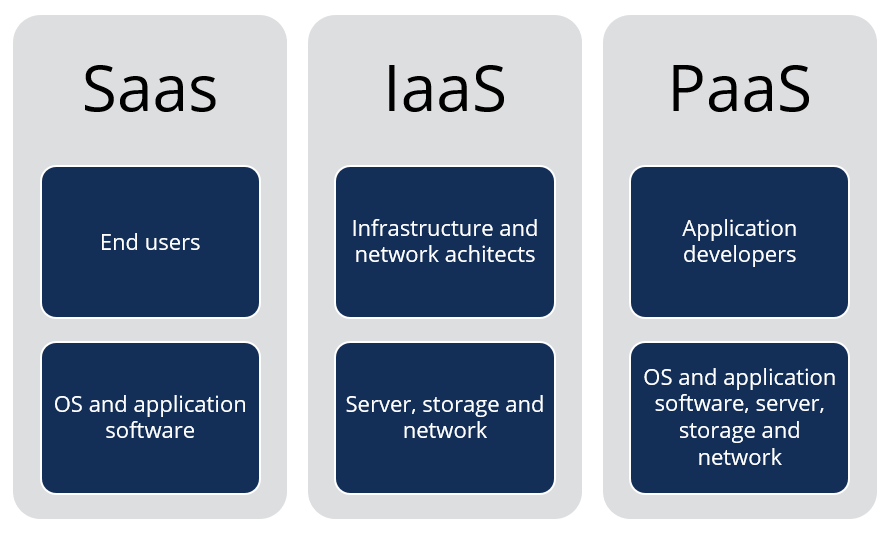Remain Upgraded with the Cloud Services Press Release: Patterns and Advancements
Wiki Article
Achieve Seamless Scalability With Cloud Provider
In the ever-evolving landscape of cloud services, attaining smooth scalability stands as a cornerstone for modern businesses looking for to stay competitive and adaptable. The capacity to easily increase or contract sources in feedback to transforming needs is a critical advantage in today's hectic digital setting. By understanding the art of scalable cloud remedies, organizations can not only optimize efficiency and streamline operations however additionally pave the way for future development and innovation. The pursuit for seamless scalability with cloud solutions reveals a globe of possibilities for those eager to accept the transformative power of vibrant source monitoring.Advantages of Cloud Scalability
Cloud scalability provides companies the flexibility to dynamically readjust sources based upon demand, ensuring ideal performance and expense effectiveness. One crucial benefit is the capability to scale resources up or down promptly in reaction to fluctuating work. This dexterity allows organizations to satisfy transforming client requirements without over-provisioning sources, eventually leading to cost financial savings. Scalability also boosts performance by guaranteeing that systems can manage boosted website traffic or work without experiencing downtime or slowdowns. By efficiently assigning sources, companies can maintain high levels of performance throughout peak times without unneeded expenditures throughout quieter periods. Furthermore, cloud scalability advertises innovation and experimentation by permitting services to easily check originalities and range them as needed. This flexibility encourages a society of continuous improvement and adaptation, enabling companies to remain affordable in a swiftly progressing market landscape. Eventually, the benefits of cloud scalability prolong beyond cost savings to include better efficiency, dexterity, and technology.Trick Functions for Scaling
Reliable scaling in cloud services counts on crucial attributes that allow organizations to readjust sources dynamically based upon need. One crucial attribute for scaling is flexibility, allowing sources to scale up or down in reaction to varying work. This guarantees that organizations can meet efficiency demands without over-provisioning sources. An additional crucial function is scalability, allowing systems to handle boosted work by including sources flawlessly. This feature is critical for accommodating development without compromising efficiency. In addition, automation plays an important function in scaling by automating the provisioning and de-provisioning of resources based on predefined plans. Automation minimizes human intervention, boosts efficiency, and makes certain fast reaction to altering demands. Monitoring and analytics devices are likewise necessary for scaling, giving insights right into resource use, performance metrics, and potential bottlenecks. These devices allow organizations to make informed choices and maximize source allotment for reliable scaling. Overall, these key features jointly empower companies to attain smooth scalability in cloud solutions.Implementing Auto-Scaling Approaches
To efficiently optimize resource allotment and adjust to differing work, companies need to strategically apply auto-scaling techniques in their cloud services facilities. Auto-scaling allows systems to immediately change the number of calculate sources based on real-time demand. There are various auto-scaling strategies that organizations can utilize, such as predictive scaling, which uses historical information to anticipate future resource demands, and responsive scaling, which reacts to current work changes.
Ideal Practices for Scalability
For organizations aiming to improve their scalability in cloud solutions, executing ideal practices is vital for optimal efficiency and source administration. One trick best practice is developing applications with a microservices design. This approach breaks down applications into smaller sized, independent services that can be deployed, updated, and scaled individually, enabling better versatility and scalability.An additional essential practice is making use of containerization modern technology, such as Docker or Kubernetes. Containers allow the product packaging of applications and their reliances right into separated systems, making it easier to scale elements independently and release them consistently across various environments.
Additionally, implementing automated release and infrastructure as code (IaC) can streamline scalability efforts (linkdaddy cloud services). Automation devices like Terraform or Ansible aid in provisioning and taking care of sources effectively, reducing manual errors and enabling quick scalability
Additionally, keeping track of efficiency metrics, setting up alerts, and performing normal ability planning are important techniques to ensure positive scalability administration. By adhering to these ideal methods, companies can accomplish seamless scalability in their cloud solutions while enhancing performance and resource application.
Tracking Performance Metrics
When assessing the performance of cloud services scalability, carefully monitoring efficiency metrics is critical for making sure optimum functionality and resource allowance. By constantly tracking crucial performance indicators (KPIs) such as feedback times, source, latency, and throughput application, companies can obtain important understandings right into the health and wellness and performance of their cloud infrastructure. Keeping track of performance metrics enables the very early detection of potential traffic jams or problems that could impact scalability, allowing positive steps to be required to resolve them before they intensify.

Conclusion
Finally, attaining smooth scalability with cloud solutions is crucial for organizations to enhance performance, boost advancement, and preserve high performance degrees throughout peak times. By leveraging the benefits of cloud scalability, carrying out auto-scaling techniques, utilizing essential attributes such as elasticity and automation, and adhering to ideal techniques like application design and efficiency surveillance, services can effectively scale their systems while taking full advantage of source usage and efficiency.The pursuit for smooth scalability with cloud services reveals a world of possibilities for those prepared to welcome the transformative power of dynamic resource administration.
Cloud scalability uses companies the flexibility to dynamically change resources based on demand, ensuring ideal performance and cost effectiveness. Another key function is scalability, making it possible for systems to manage raised work by adding sources perfectly.For companies intending to enhance their scalability in cloud services, applying ideal practices is vital for ideal efficiency and source management.When Cloud Services examining the effectiveness of cloud services scalability, carefully monitoring efficiency metrics is important for guaranteeing optimal functionality and resource allotment.
Report this wiki page